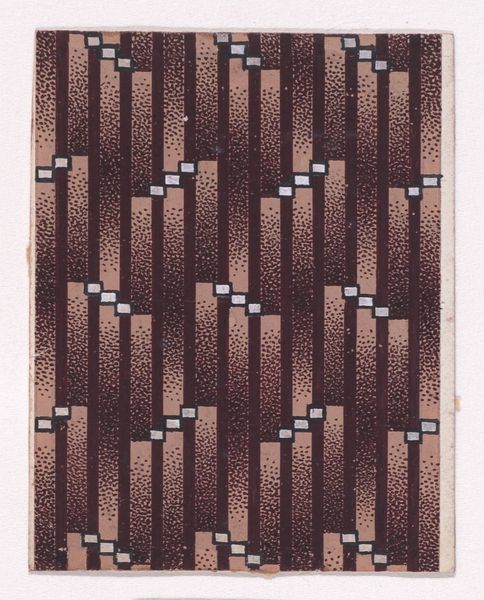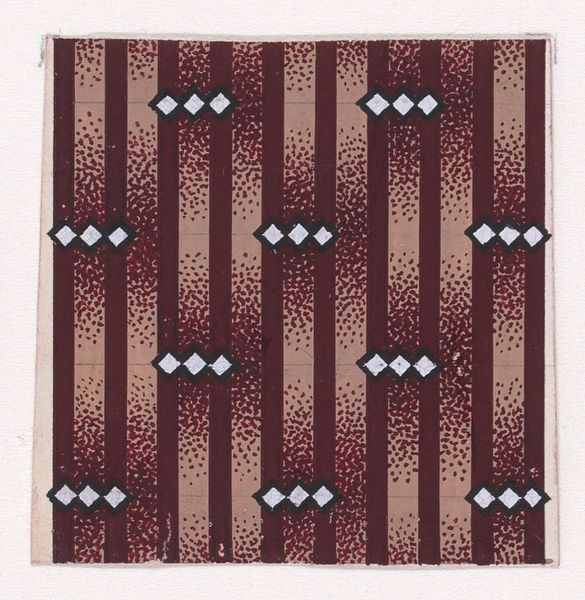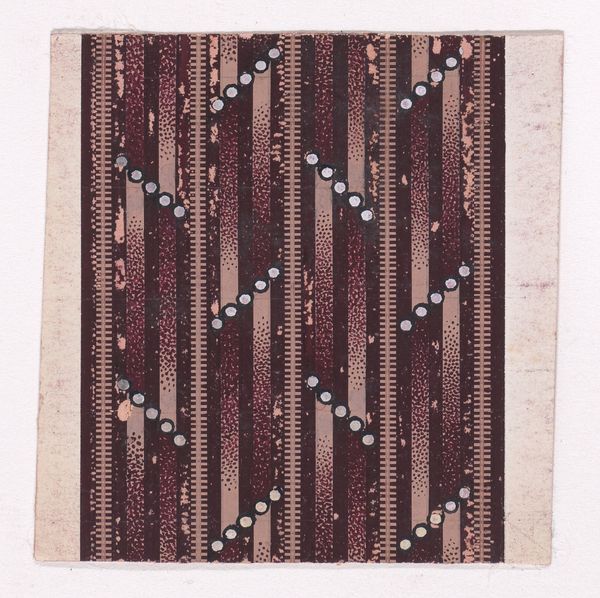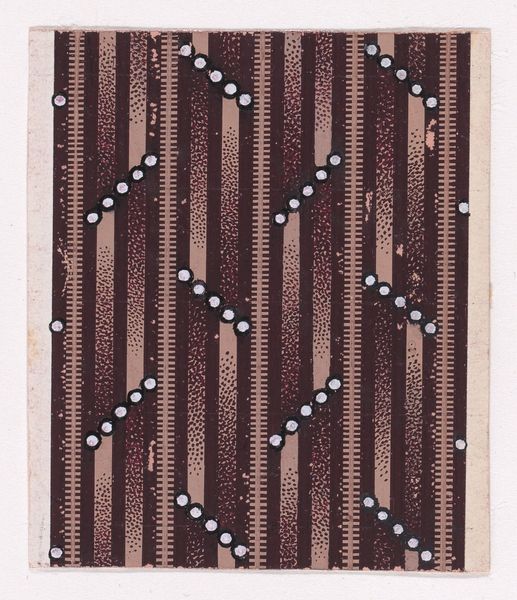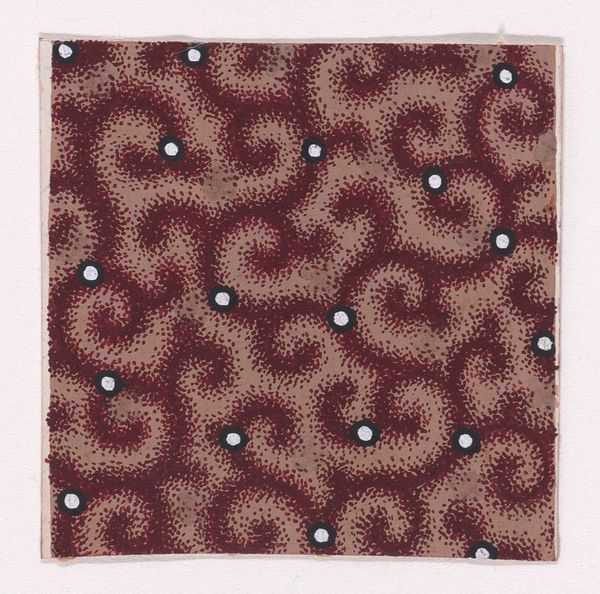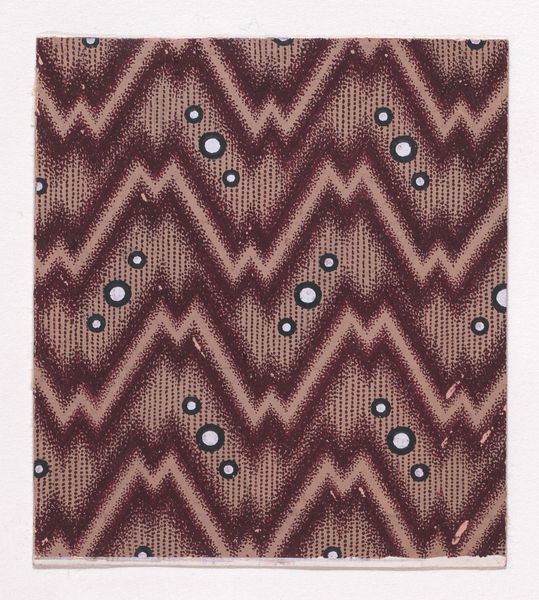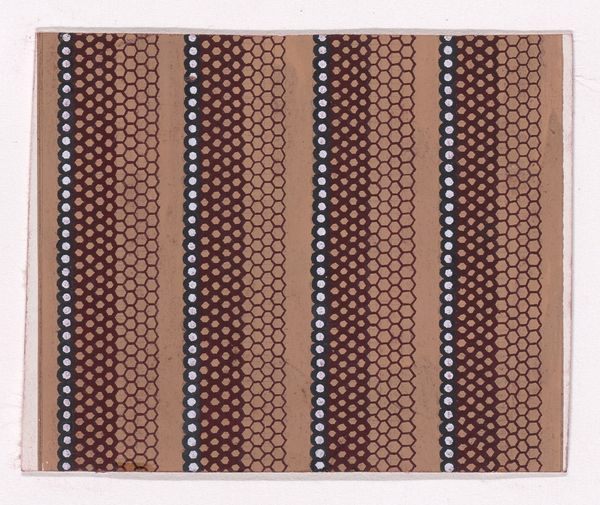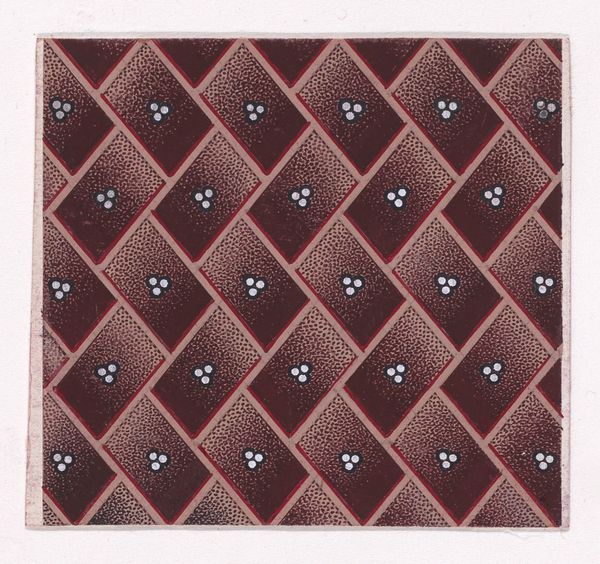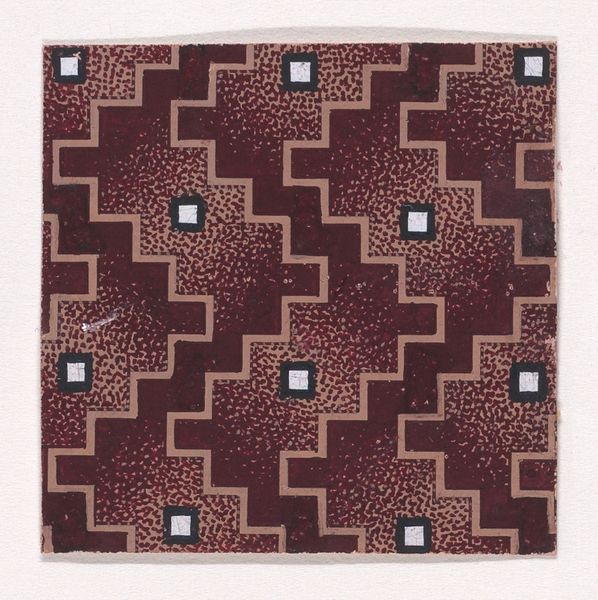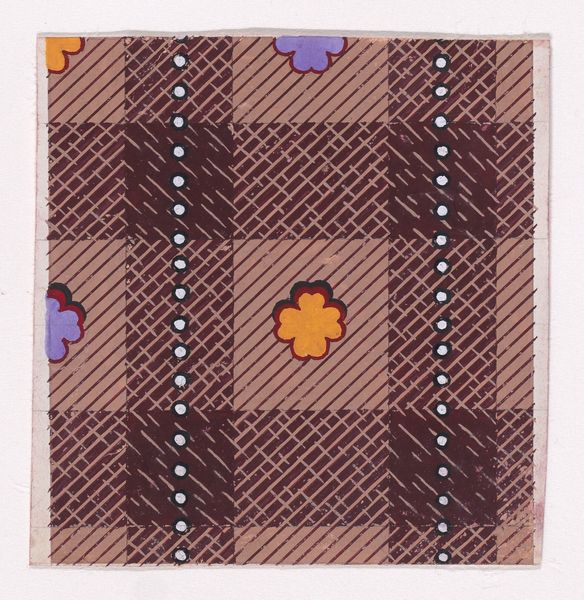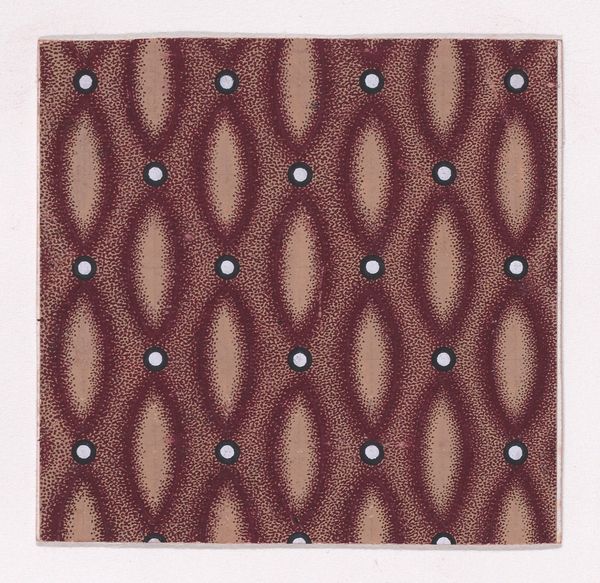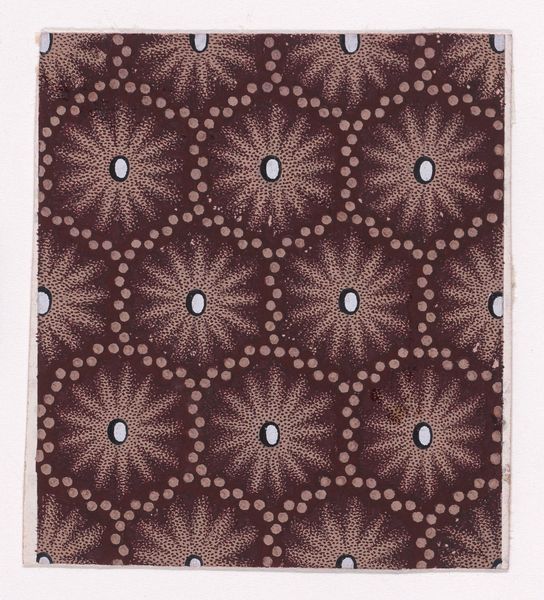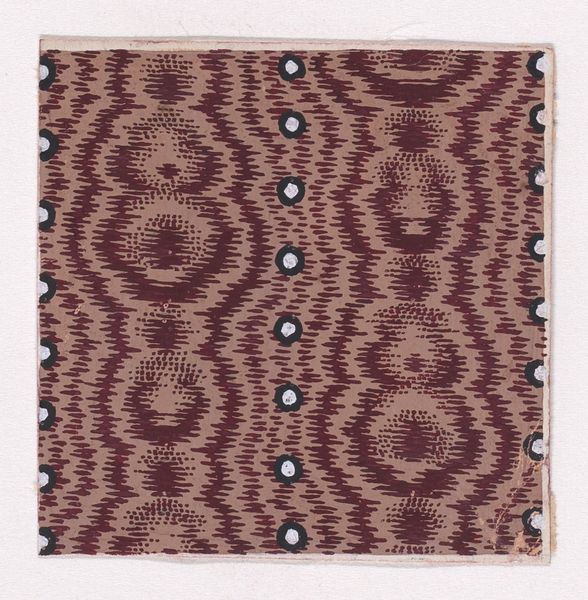
Textile Design with Alternating Vertical Rows of Horizontal Strings of Lozenges with Over a Striped Background 1840
0:00
0:00
print, textile
# print
#
textile
#
geometric pattern
#
geometric
#
geometric-abstraction
#
textile design
Dimensions: Sheet: 2 3/8 × 2 9/16 in. (6.1 × 6.5 cm)
Copyright: Public Domain
Editor: We're looking at a textile design from 1840, made by an anonymous artist. It's called "Textile Design with Alternating Vertical Rows of Horizontal Strings of Lozenges with Over a Striped Background." All those rows and stripes... it feels quite formal, almost rigid to me. What do you see in this piece from a historical point of view? Curator: Well, looking at it through the lens of social history, these repetitive geometric patterns were incredibly popular in the mid-19th century. Think about the rise of industrialization, mass production, and a burgeoning middle class wanting to emulate upper-class aesthetics. What was considered fashionable played a significant role, too, with design influencing identity, and signaling status through the material and craftsmanship, even when machine-made, in an attempt to mimic handcrafted designs. Do you think it reflects that tension? Editor: Absolutely, I can see the influence of the machine now. Those perfectly repeated lozenges. But wasn't there also a revival of handcrafting happening at the same time? Seems like such a push and pull. Curator: Precisely! The social fabric of the time was complex. As new technologies threatened traditional skills, arts and crafts movements pushed back. Design schools sprung up teaching new techniques. But design production relied on the creation of marketable things appealing to middle class status aspirations. Editor: So, this design, mass produced as it might be, taps into the broader anxieties and aspirations of its time. Fascinating! I never thought of textile design having such cultural weight. Curator: Exactly. Everyday objects offer so much more than just their immediate functionality or surface appeal. What else do you notice that might indicate that? Editor: Hmm, I hadn't considered it that way, seeing the image as connected to societal values rather than something purely decorative. I’ll definitely think about textile's societal significance more carefully in the future!
Comments
No comments
Be the first to comment and join the conversation on the ultimate creative platform.
